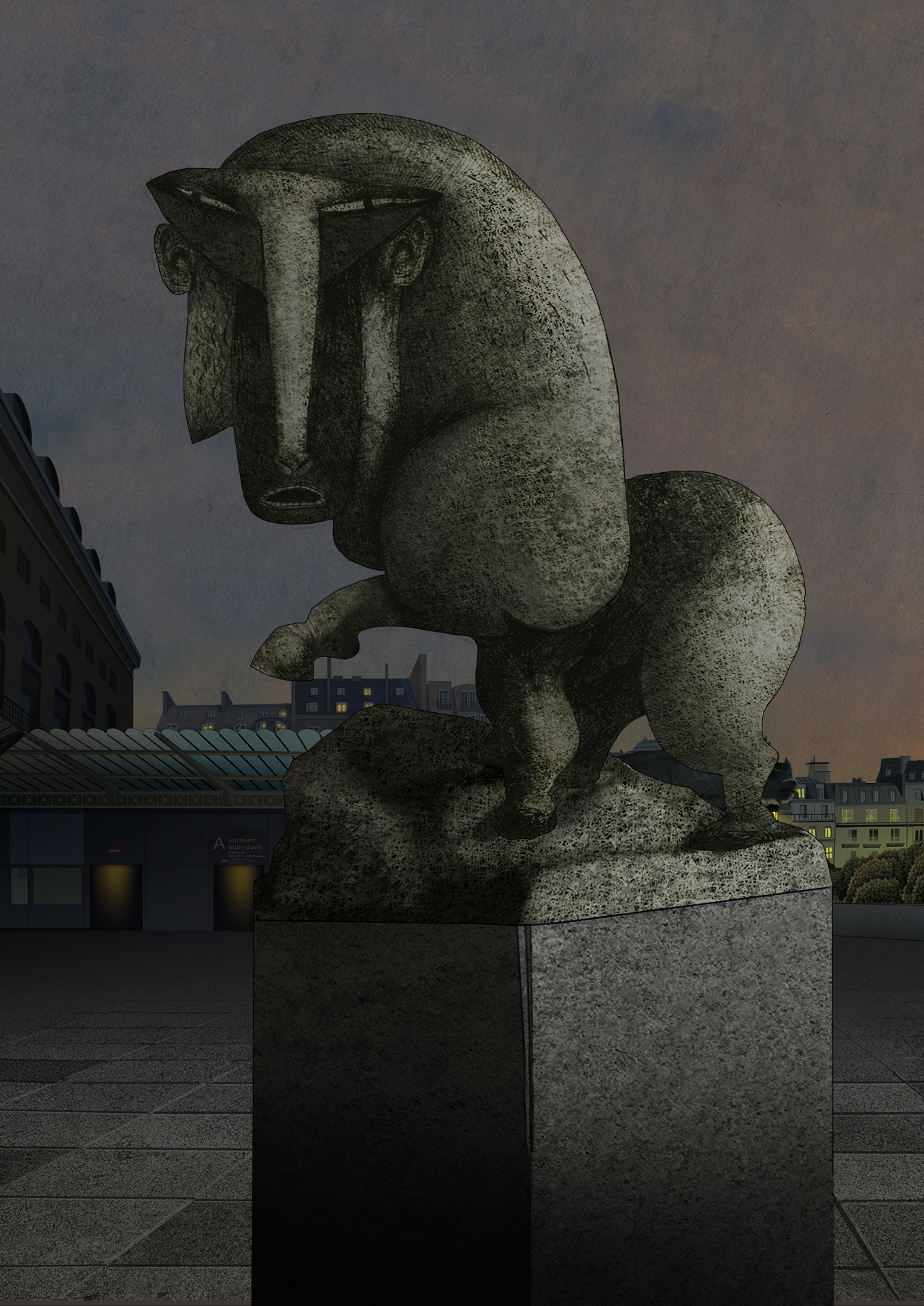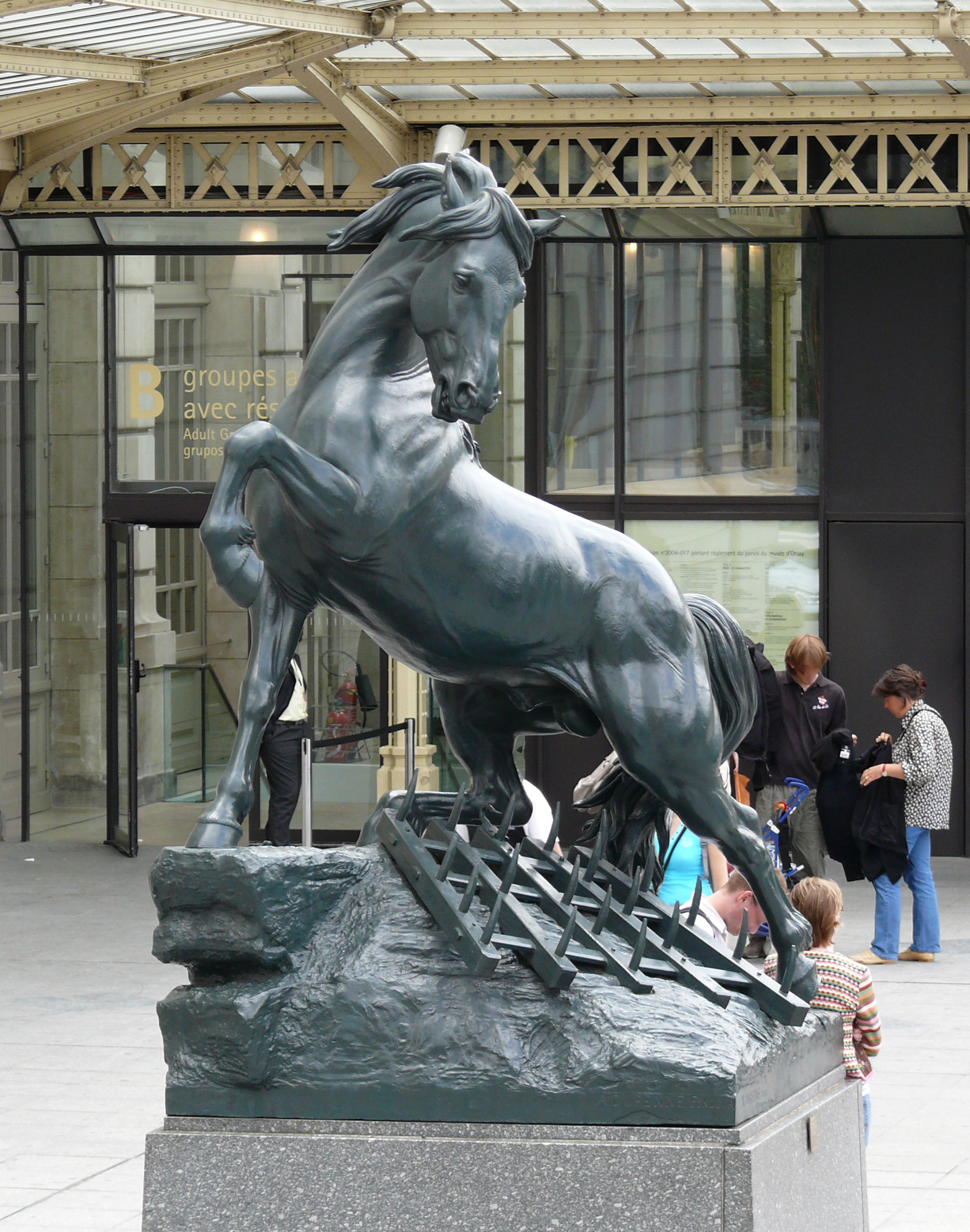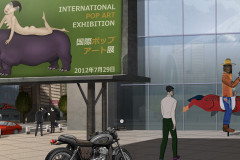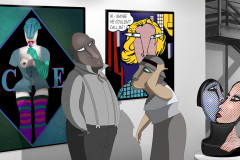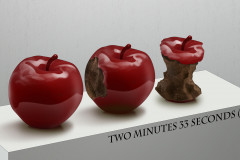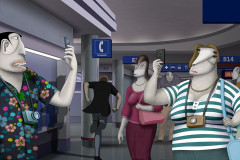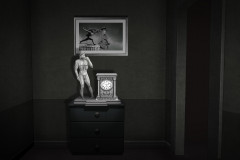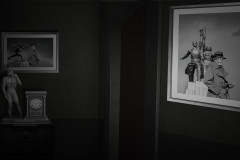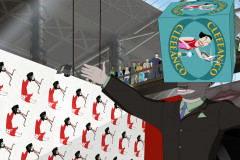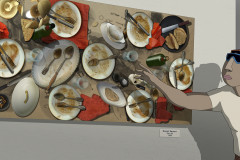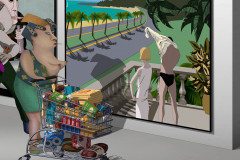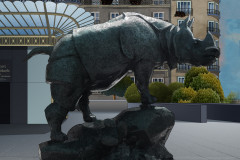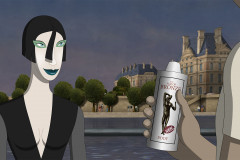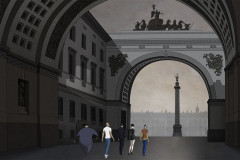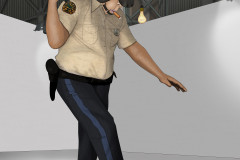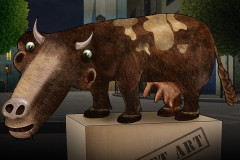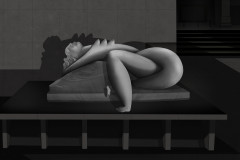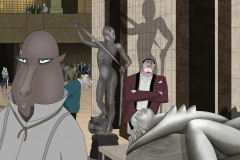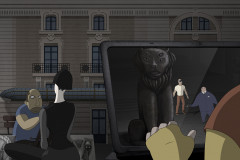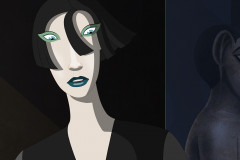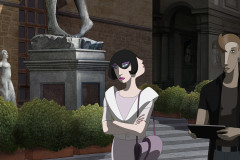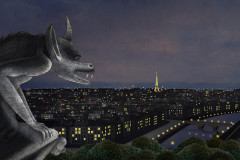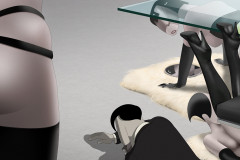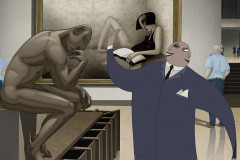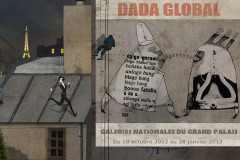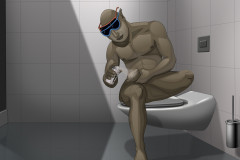Rouillard, Pierre (1820-1881): Ló boronával, 1878 (öntött vas, 350 cm magas), Párizs, Musée d'Orsay előtt. Az egykor az 1878-as párizsi világkiállítás fő pavillonja, a Trocadero Palota előtt álló négy állatszobor egyike, a francia „animalier”-k, azaz állatábrázolásokkal foglalkozó művészek leghíresebbikének alkotása ma a Musée d'Orsay épülete előtt áll.
Alig néhány méterre orrszarvú-társától áll most ez az ágaskodó, a veszélyesen felfelé meredő borona tüskéivel bátran dacoló ló, amely egykor a Trocadero Palota előtti szökőkútnál díszelgett az említett orrszarvúval, egy elefánttal és egy bikával együtt. A lovasszobrok hagyománya nagyon régre nyúlik vissza a művészettörténetben, a lovas nélküli ló azonban már inkább a 19. század francia művészeti divatjának terméke. A polgárság körében ugyanis rendkívül népszerűek voltak ezek a realisztikus önálló „állatportrék.” Rouillard különösen az oroszlánokhoz és lovakhoz értett, és számos párizsi megbízás mellett, Isztambulban, a szultán szolgálatában is készített nagy méretű állatszobrokat. Leghíresebb alkotása, a boronás ló, 1986 óta áll a Musée d'Orsay előtt.
Rouillard, Pierre (1820–1881): Horse with Harrow, 1878 (cast iron, 350 cm tall), in front of the Musée d'Orsay, Paris. Once part of the grand fountain ensemble in front of the Trocadéro Palace—the main pavilion of the 1878 Paris World’s Fair—this sculpture is one of four monumental animal figures and the most famous work by Rouillard, the leading French animalier (sculptor of animals). Today, it stands just meters away from its former companion, the rhinoceros, outside the Musée d'Orsay.
The rearing horse, defiantly facing the sharp, upward-pointing spikes of the harrow, was originally displayed alongside a rhinoceros, an elephant, and a bull—each a powerful symbol, with two of them representing exotic lands beyond Europe. While equestrian statues have a long-standing tradition in art history, horse sculptures without riders are more a product of 19th-century French artistic taste. Among the bourgeoisie, realistic, stand-alone animal “portraits” became immensely popular.
Rouillard was especially skilled at depicting lions and horses. In addition to numerous commissions in Paris, he was also invited to create large-scale animal sculptures in Istanbul for the Sultan. His most renowned work, the Horse with Harrow, has stood in front of the Musée d'Orsay since 1986.






